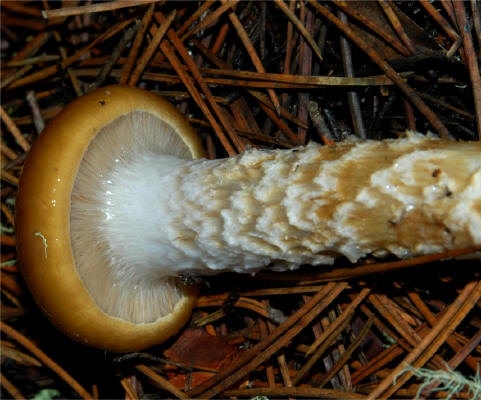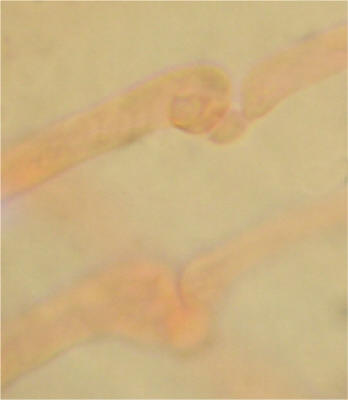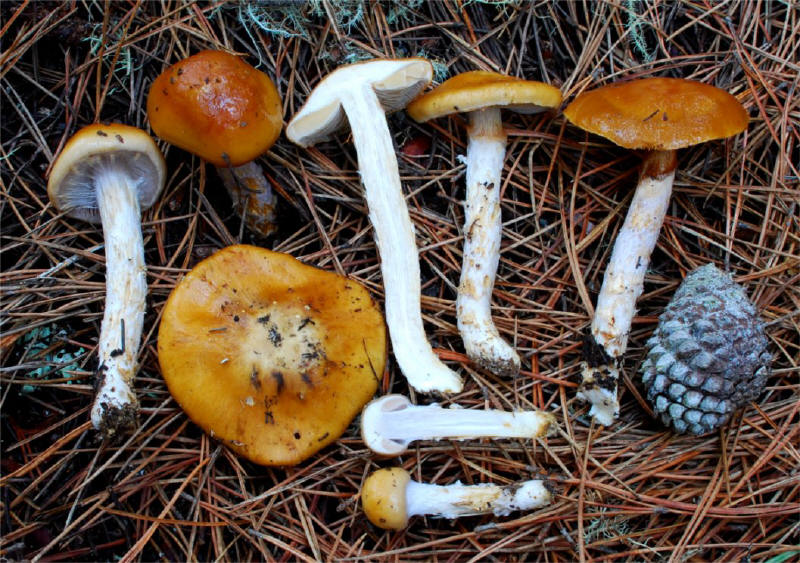
| This Myxacium
is very common in
the coastal forests of Northern California where Bishop Pine dominates.
Formerly known as C. cylindripes Kauffman and C.
muscigenus Peck, this American species lost its
transcontinental identity after being synonymized with the Frisian
concept of Cortinarius collinitus.
Some authors have called the possibility of an association to Vaccinium and my own observations confirm the proximity of Vaccinium ovatum (Huckleberry) in almost all collections. The degree of pale/bluish tinges on the stem/gills is a variable characteristic. The strong tendency of the stipe to develop girdles (like C. trivialis) helps to separates it from the very similar 2--needle Pine species: C. mucosus. These three closely related species are members of Section Myxacium in Subgenus Myxacium, which molecular studies have shown to be monophyletic. All three have large, coarsely verrucose to wrinkled spores. |
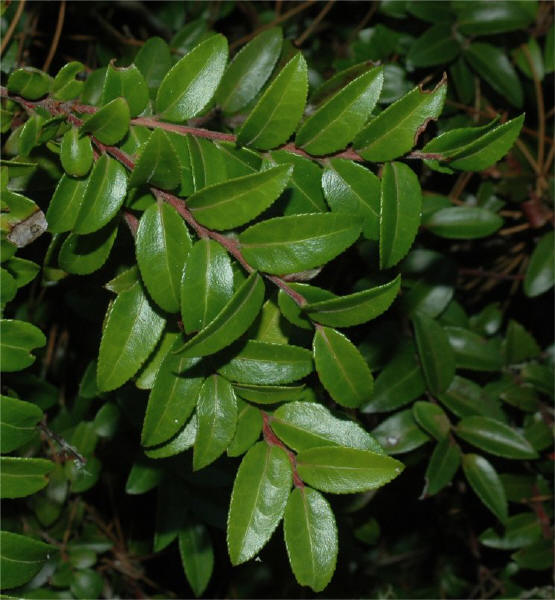 Vaccinium ovatum |
_small.jpg)
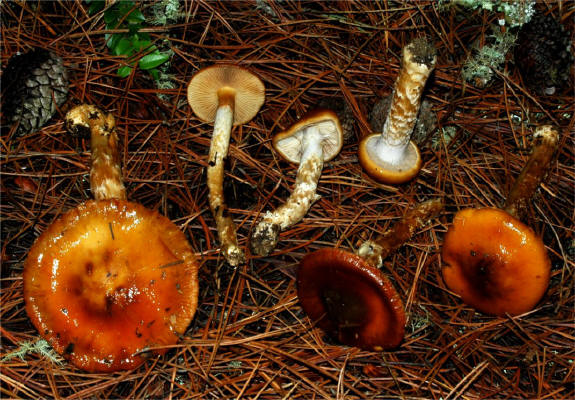
 The violaceus tinges can typically be noticed only in very young sporocarps. |
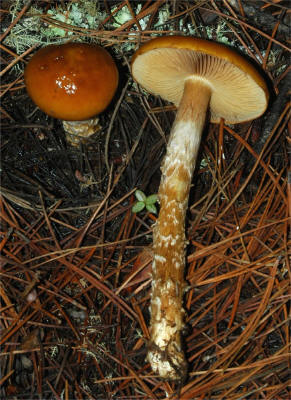 |
